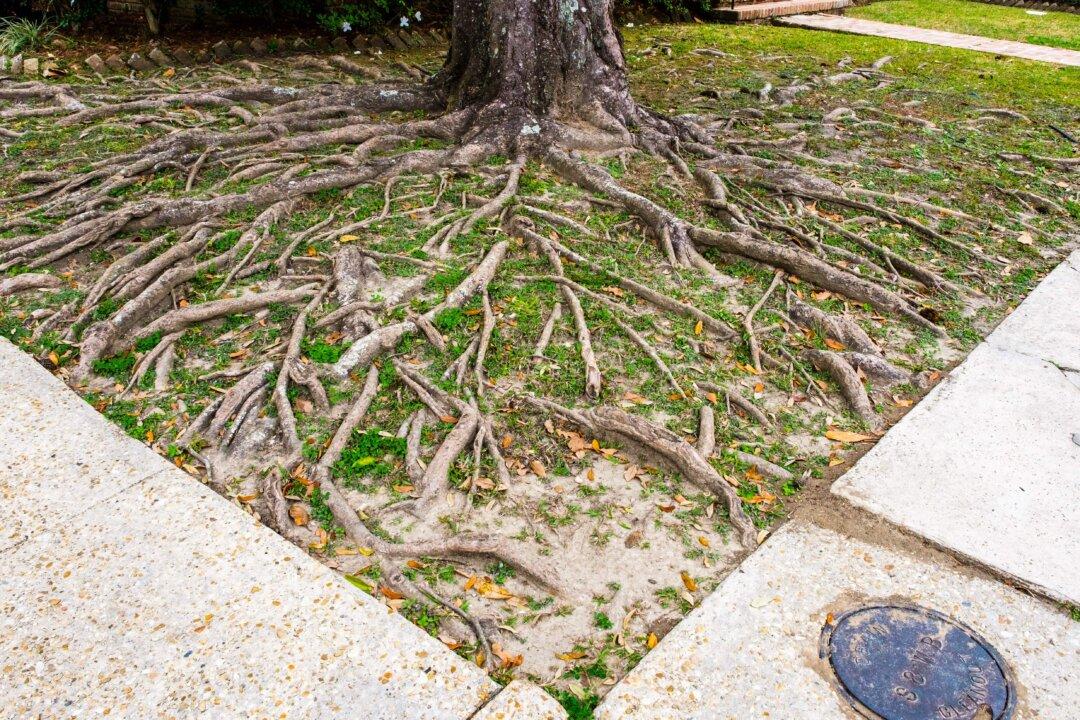Q: I have a paving stone patio behind the house. Behind the patio is a man-made stone wall that you can sit on. Behind the wall is a flower bed that has an ash tree in it. And finally, behind the flower bed is a downhill slope that is covered in grass. The slope is not steep, and it can be walked on and mowed with no problem.
The ash tree has roots that are growing on top of the grass. They make it hard to walk or mow the grass. The tree’s roots are also starting to shift parts of the wall. I am afraid the wall will become unstable and fall over.





